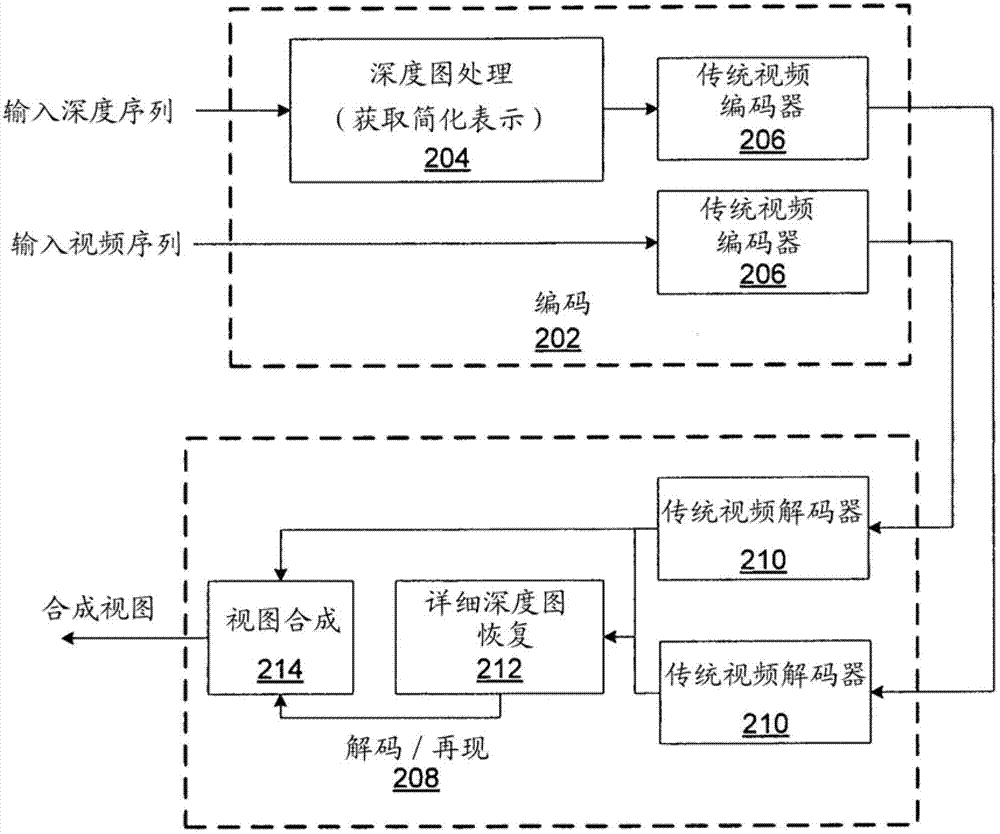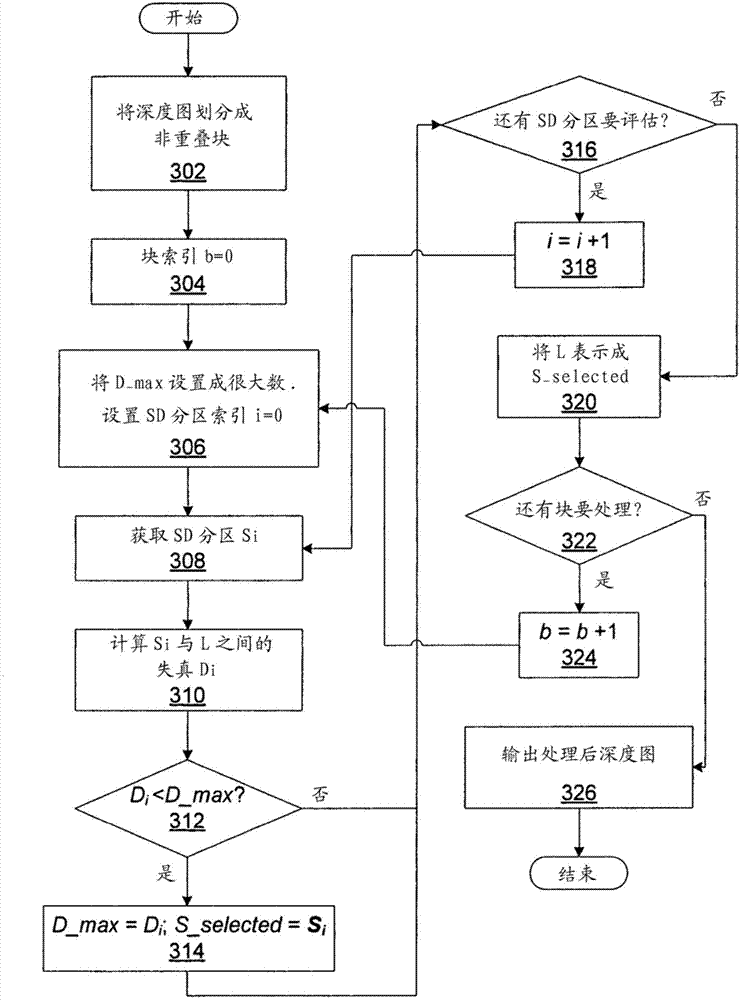Filtering and edge encoding
A depth and image technology, applied in the field of 3D video realization, can solve problems such as huge artifacts
- Summary
- Abstract
- Description
- Claims
- Application Information
AI Technical Summary
Problems solved by technology
Method used
Image
Examples
Embodiment Construction
[0063] To encode depth maps efficiently, it is advantageous to simplify the representation of depth variations and complex edges. These representations are much easier to encode and also lead to a new encoding mode, Sparse Dyadic Mode. In one embodiment, edge information from 2D video is utilized along with simplified depth in order to recover depth map details. The resulting system can reduce the depth bitrate while maintaining the rendered view. Furthermore, in order to suppress strong coding artifacts in compressed depth maps, a new edge-protecting denoising filter is used in certain embodiments. To this end, certain filters utilize edge information in the corresponding video frame, optionally in the depth map. The filtering weights for a particular filter are determined by the proximity of sample locations, the similarity between collocated pixels in the video frame, and optionally, the similarity between depth samples. The filtering process can be incorporated into the...
PUM
 Login to View More
Login to View More Abstract
Description
Claims
Application Information
 Login to View More
Login to View More - R&D Engineer
- R&D Manager
- IP Professional
- Industry Leading Data Capabilities
- Powerful AI technology
- Patent DNA Extraction
Browse by: Latest US Patents, China's latest patents, Technical Efficacy Thesaurus, Application Domain, Technology Topic, Popular Technical Reports.
© 2024 PatSnap. All rights reserved.Legal|Privacy policy|Modern Slavery Act Transparency Statement|Sitemap|About US| Contact US: help@patsnap.com










